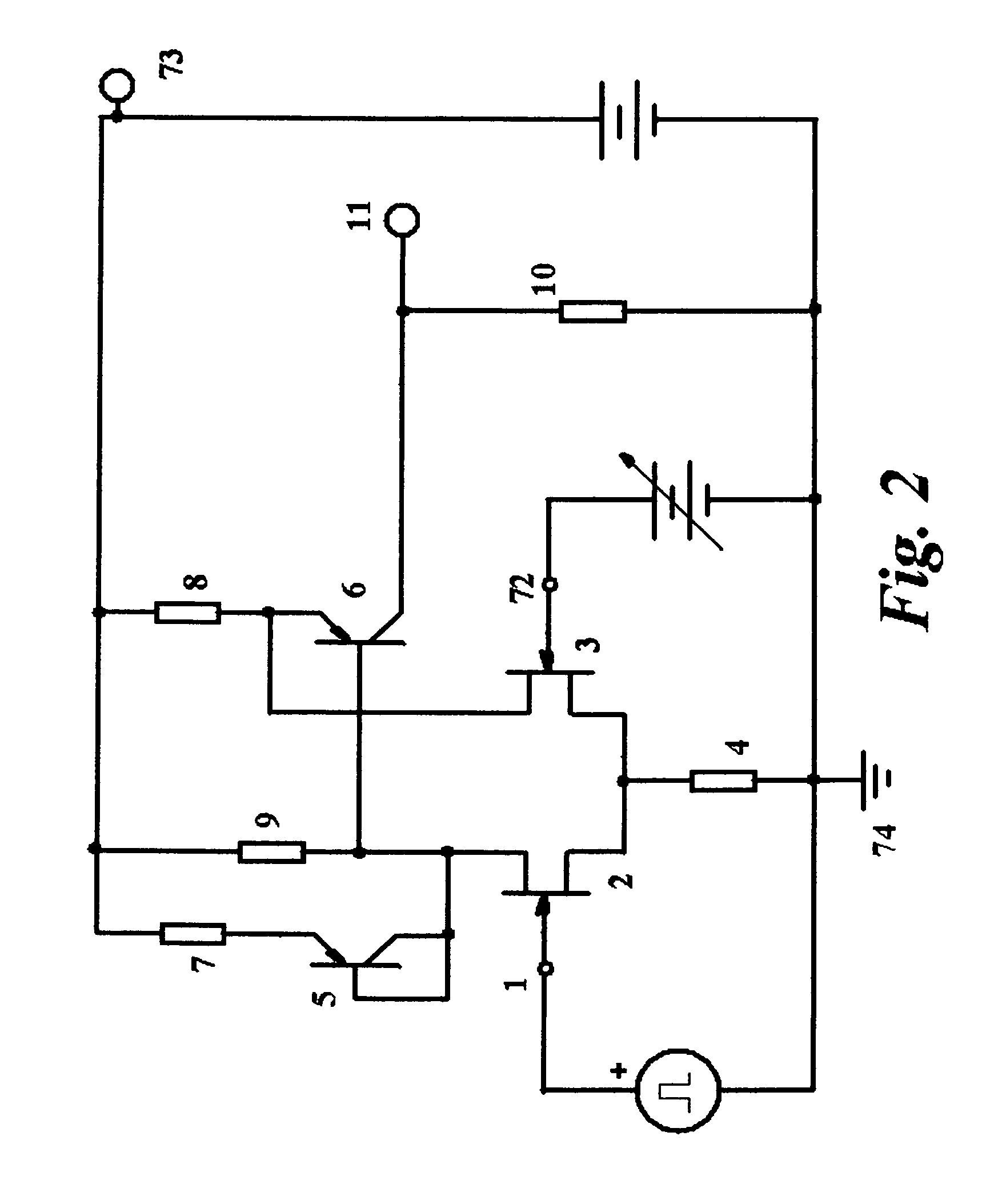Apparatus for extending a scintillation detector's dynamic range
a scintillation detector and dynamic range technology, applied in the field of radiation detection and measurement, can solve the problems of reducing the dynamic range of the detector, affecting the detection accuracy of the detector, and affecting the noise performance of the semiconductor radiation detector operating at room temperature, so as to improve the dynamic range and linearity of the dose-rate of the detector system, and reduce the saturation effect. , to achieve the effect of preserving system sensitivity and preserving system sensitivity
- Summary
- Abstract
- Description
- Claims
- Application Information
AI Technical Summary
Benefits of technology
Problems solved by technology
Method used
Image
Examples
Embodiment Construction
[0028]In a radiation counter, input pulses whose amplitude exceeds a pre-determined threshold generate corresponding output pulses of fixed amplitude which, in turn, are either counted digitally or time-averaged in an analog rate-meter circuit. Our new solution entails giving up on the notion of ‘pulse counting’, per se, and replacing the standard threshold discriminator of the prior art with a new circuit combining the functions of a threshold discriminator and a linear transmission gate.
[0029]In the prior art, such combination circuits employed dual signal paths; one each for the threshold discriminator and linear transmission gate functions (Leo, 1994; Elad, et al, 1965; Eder, 1984). Here, we present a simpler, more straightforward embodiment of a linear threshold discriminator that utilizes only one signal transmission path.
[0030]FIGS. 1A and 1B compare the input-output characteristic of a standard threshold discriminator of the prior art, versus our new, combined-function, anal...
PUM
 Login to View More
Login to View More Abstract
Description
Claims
Application Information
 Login to View More
Login to View More - R&D
- Intellectual Property
- Life Sciences
- Materials
- Tech Scout
- Unparalleled Data Quality
- Higher Quality Content
- 60% Fewer Hallucinations
Browse by: Latest US Patents, China's latest patents, Technical Efficacy Thesaurus, Application Domain, Technology Topic, Popular Technical Reports.
© 2025 PatSnap. All rights reserved.Legal|Privacy policy|Modern Slavery Act Transparency Statement|Sitemap|About US| Contact US: help@patsnap.com



